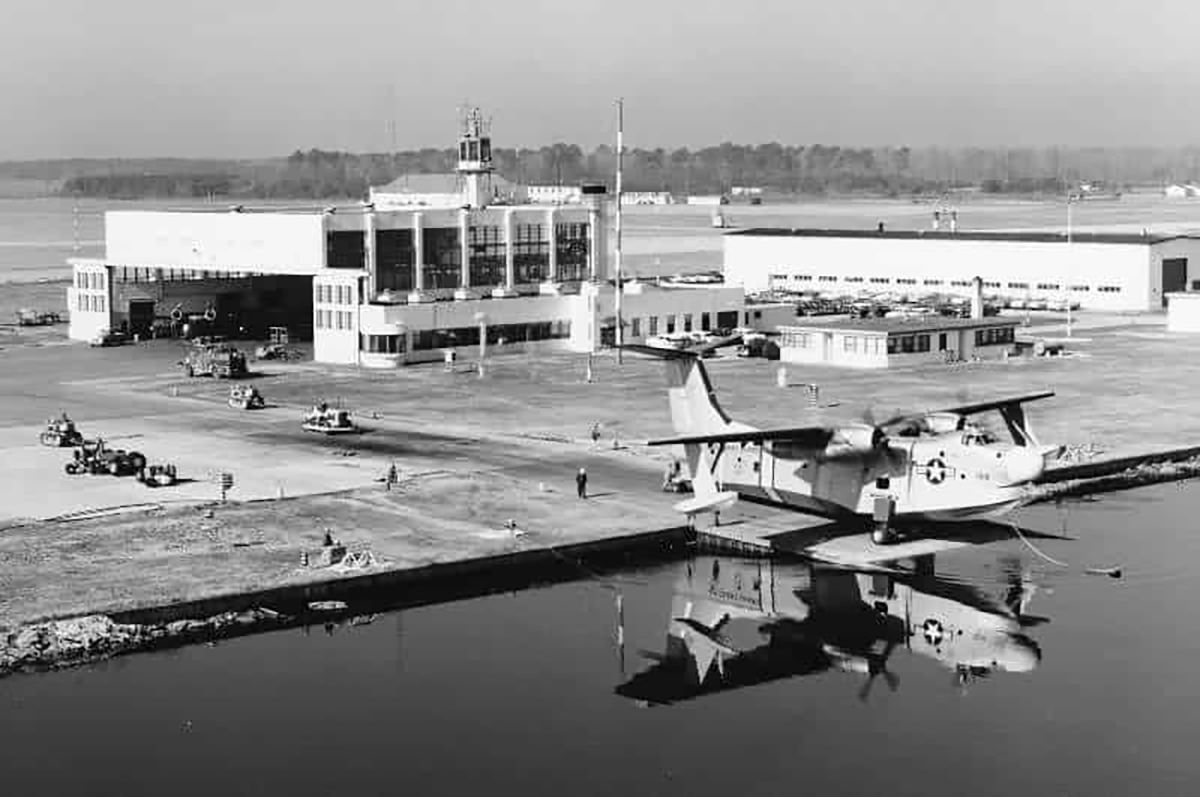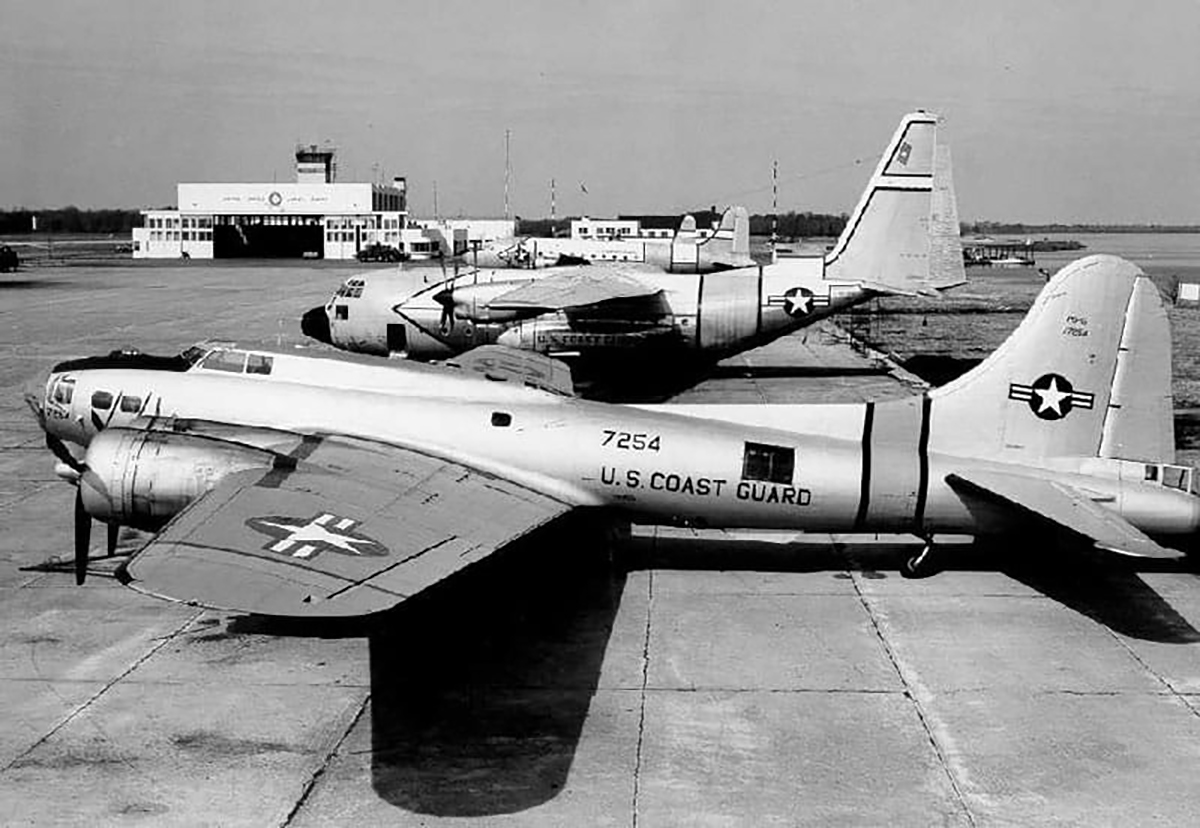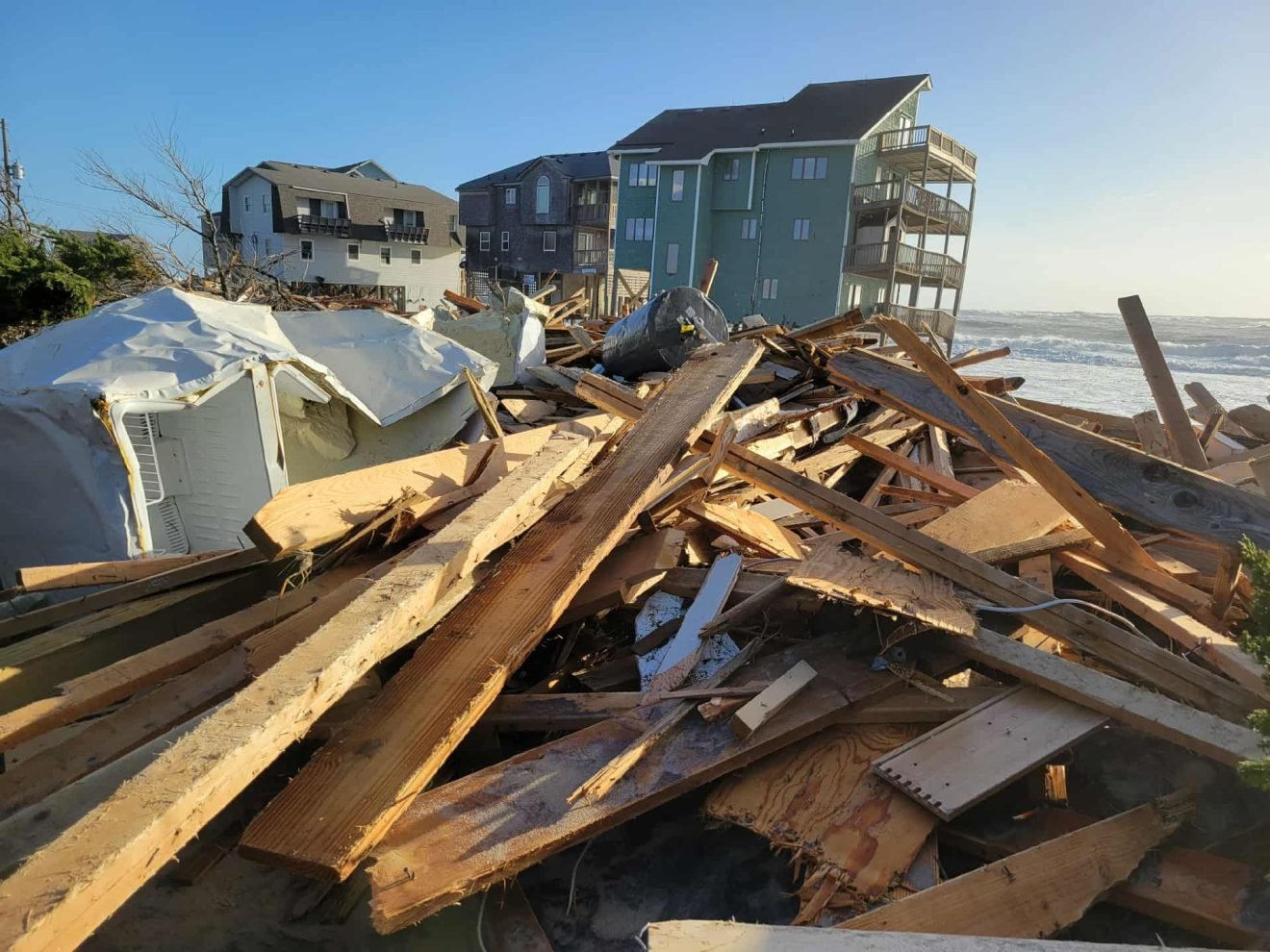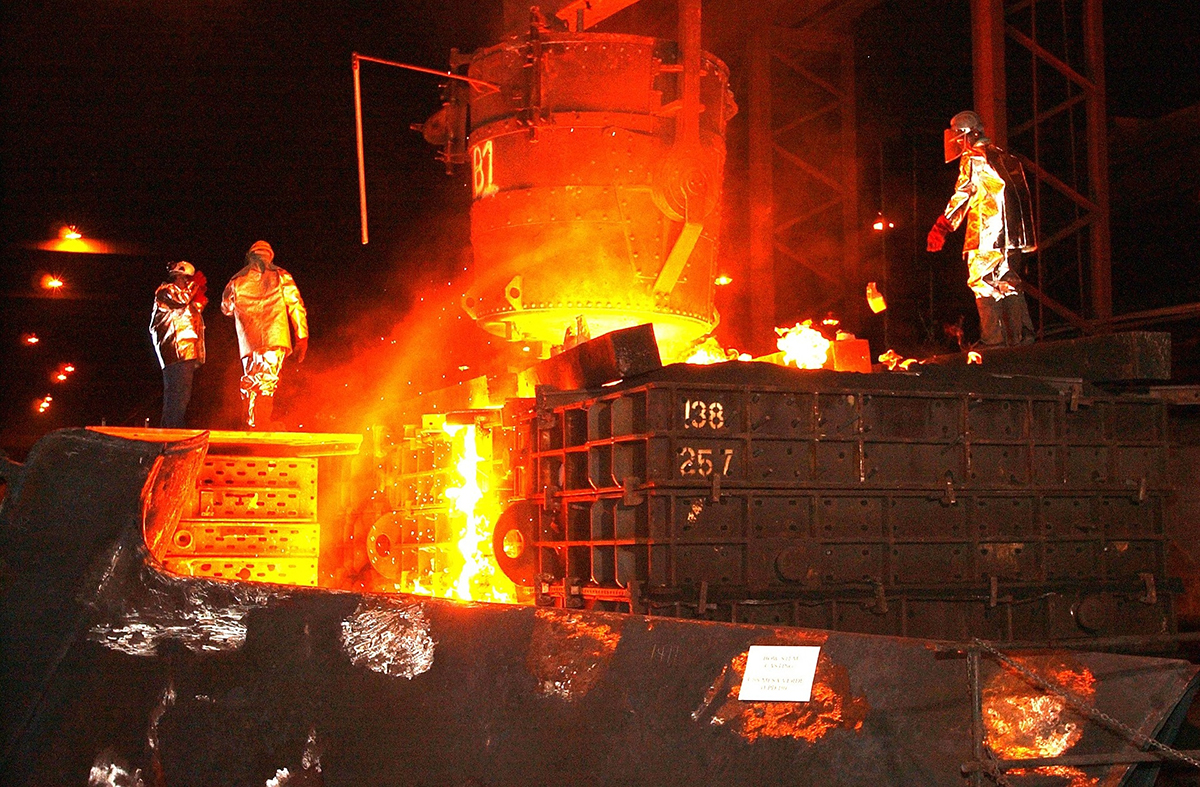
United States Coast Guard Air Station Elizabeth City is celebrating its 82nd birthday Monday, just weeks after the Coast Guard’s 232-year anniversary Aug. 4.
Now the Coast Guard’s largest aviation facility and biggest employer in the area, the base on the south side of Elizabeth City covers some 800 acres, a far cry from the original 249 acres when it first began operations Aug. 15, 1940.
Supporter Spotlight
When the station was commissioned, there were only four officers, 52 enlisted men and 10 aircraft including three Hall PH-2 seaplanes, four Fairchild J2K landplanes, and three Grumman JF-2 amphibians, according to Coast Guard Aviation History, a project of the Coast Guard Aviation Association.
Today, there is a combined workforce of around 2,000 Coast Guard personnel and civilian employees, making it the largest employer in northeastern North Carolina, according to the state archives.
The station’s core mission is search and rescue, but it also has aerial patrols as diverse as iceberg tracking in the Atlantic to monitoring shipping from the Atlantic Coast to the Azores.
Until recently, the base handled the training of the service’s rescue swimmers. After 30 years here, the training has temporarily moved to Petaluma, California. The renovated facility should reopen in 2025, according to the Coast Guard website.
Although Elizabeth City is one of the largest and busiest Coast Guard bases in the nation, there seems to be very little documentation of its earliest days.
Supporter Spotlight
From its beginning, Elizabeth City was an air base. It is not clear why Elizabeth City was chosen for what would become one of the most important Coast Guard and Naval facilities on the East Coast during World War II.
It is likely that the late Lindsay Warren played an important role. Warren was a Democrat who represented the 1st District encompassing northeastern North Carolina, from 1925 to 1940. He was briefly the speaker of the House before becoming the nation’s comptroller general in 1940.
Aycock Brown, in his “Covering the Waterfront” column that he wrote for the Beaufort News in the 1930s and 1940s, took note of 1939 headlines to speculate on what could be happening at Elizabeth City, suggesting Warren played an important part in bringing the base to the area.
One of the headlines originated in Elizabeth City, the other was from Washington, D.C.
“The Elizabeth City story stated that work began there Tuesday on the $128,000 WPA project which will when completed, be a modern and up-to-date Coast Guard Air Base, obtained through the efforts of Congressman Lindsay Warren,” Brown wrote.
“The Washington story under the caption: ‘Warren Has Hopes For Ocean Air Base’ quoted the congressman as saying he was looking into the possibility of Elizabeth City, N.C., becoming an airbase for trans-Atlantic plane service.”
Brown’s $128,000 from Works Progress Administration was dwarfed by the $2 million, or $42.3 million today, that the government actually spent on the facility. Also called Work Projects Administration, the WPA was created in 1935 for the unemployed under President Franklin D. Roosevelt’s New Deal.
Neither the base nor the city ever became a center for trans-Atlantic plane service, but what it did become was an important facility for confronting the U-boats that brought World War II to the doorstep of the nation.
While Warren may have played a role in steering the Coast Guard to Elizabeth City, there were other factors also at play.
Even though the United States was ill-prepared for open warfare when the Japanese attacked Pearl Harbor on Dec. 7, 1941, government officials were aware that the world was becoming an increasingly dangerous place and were taking steps to protect vital interests.

Chesapeake Bay and the Hampton Roads area of Virginia was one of the largest ports on the East Coast, and had the open water needed for the seaplanes the Coast Guard was using.
The Virginia ports, though, were open to the sea, and Elizabeth City’s inland location was important to planners.
A document provided by Dr. William H. Thiesen, Atlantic area historian for the Coast Guard, offers a clue to what planners were thinking.
The document seems to be a study of how the Coast Guard’s air bases in general were used during World War II, although there is no date on it. The study’s author is unknown, and the pages are marked “confidential.”
“While the station was primarily intended as a major overhaul base for the eastern seaboard, the location of the base nevertheless was selected with a view of its strategic importance in regard to possible enemy action in time of war,” the study’s author wrote. “The new site was ideal, the most advantageous location between New York and Miami. In a sheltered area, north of Albemarle Sound and some fifty or sixty miles from Cape Hatteras, the station was built on the sloping banks of the Pasquotank River.”
Initially most of the flights were mapping exercises and law enforcement, especially enforcement of the Neutrality Acts. The Neutrality Acts were designed to keep the United States out of the warfare that was so much a part of the decade. Although modified and eventually rendered irrelevant, the acts prohibited U.S. flagged ships from carrying weapons of war to belligerent nations.
It was enforcement of the Neutrality Act of 1939 that Roosevelt used to expand and modernize the Coast Guard, informing Congress in an executive order “that a national emergency exists in connection with …proper observance, safeguarding, and enforcing of the neutrality of the United States…”
He went on to authorize the Coast Guard to add 2,000 more men and to order the “… facilities of the Coast Guard be increased, repaired, modernized, enlarged, and equipped to the extent determined by the Secretary of the Treasury …”
With the declaration of war, the Coast Guard was directed to operate as part of the Navy, and one of the primary functions of the base was the interdiction of German submarines. It was a function Coast Guard aircraft were ill-suited to perform.
“Initially there were very few resources available to combat the German submarines. The Coast Guard aircraft, not designed for combat, were equipped with locally fabricated depth charge racks and pressed into service,” notes United States Coast Guard Aviation History website.
It was extraordinarily frustrating for the pilots, according to the confidential study.
“Daily, merchant vessels were being sunk, while pilots stood by helplessly, unable to do more than turn in an outraged report,” the study continues, “It was not until December, 1943, that adequate fighting planes were procured. By that time the submarine danger was almost over.”
Yet the air crews saved lives, though the rescues were dangerous. Aviation History combines all air station activity indicating that more than 1,000 were rescued and with 95 landings.
“Three OS2U Kingfishers on a routine patrol spotted men in the water 30 miles east of Cape Hatteras. Depth charges were dropped in an area where it would not injure the men. All three aircraft landed and picked up all the survivors who rested on the wings until a boat arrived from the Elizabeth City air station to pick them up,” is one of the stories on the website.
By the end of the war, the base had returned to much of its original mission of rescue. Aggressive patrolling by U.S. military aircraft and communication with naval ships made the East Coast too dangerous for the submarines.
After the war, Elizabeth City, now greatly expanded, became a training and repair hub for the Coast Guard, as well as an air patrol base, functions that have continued until today.







